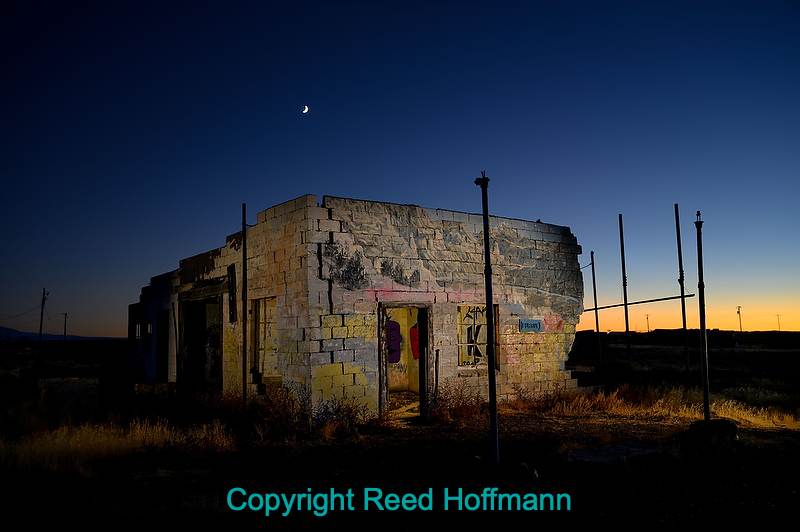You may know that I’m a huge fan of night photography, and Lume Cubes play a huge role in that. So it saddens me to report the news that the company has shifted their focus more towards video and other types of lighting, and that has a negative impact on still photographers like me. Here’s why:
I was introduced to light painting in 2001 and was immediately hooked. It allowed me to make pictures that simply wouldn’t exist otherwise, and over the next fifteen years I did more and more of that. Here’s a story I wrote a few years ago on the basics of light painting.
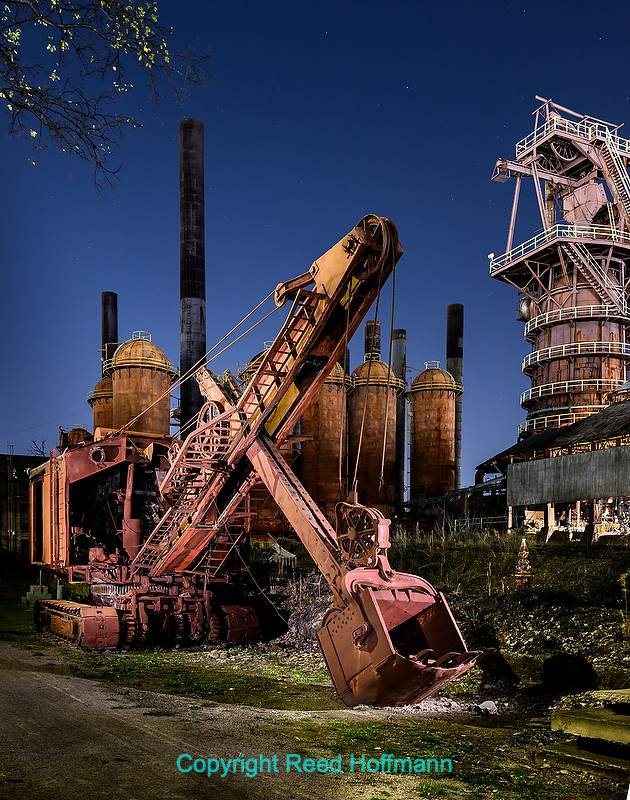
This photo from the workshop I teach at Sloss Furnaces in Birmingham, AL is a great example of what light painting can do for you. The steam shovel was in shadow, so without the combination of Lume Cubes and Lume Panels I’m using to light it, this photo wouldn’t exist. Nikon Z 8, Manual exposure, Incandescent white balance, ISO 400, 8-seconds at f/5, Nikkor Z 24-120mm f/4 S lens at 24mm.
Then I learned about “low level lighting.” That’s a different type of light painting, using fixed, constant, low-power light sources. That, in time, led me to Lube Cubes. They gave me two important advantages over other lights when doing low level lighting:
First, being Bluetooth enabled, once I had a light in place, I could control its power without touching it (via an app on my phone). With other lights, picking them up to adjust the power meant I had to re-position them each time. That was a pain, and made the shoots harder to do and take longer to accomplish.
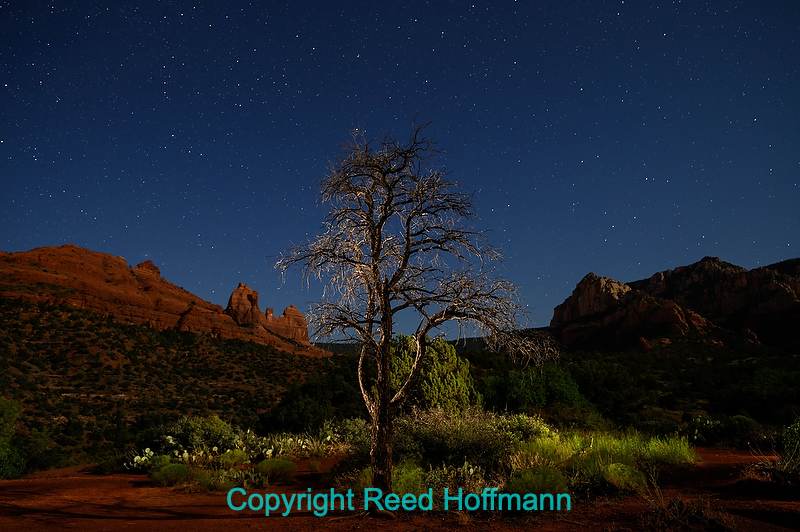
For this photo during the Sedona workshop I teach, I used one Lume Cube at far right and one at far left. We started just after sunset, and as the sky became darker, I was easily able to lower the power of the lights, to fit in with the sky, using the Bluetooth app on my phone without touching the lights. Nikon Z 8, Manual exposure, Sunny white balance, ISO 2500, 20-seconds at f/4, Nikkor Z 14-24mm f/2.8 S lens at 22mm.
Second, Lume Cubes had accessories that gave me incredible control over exactly where the light went. While most people think that lighting is all about putting light on something, that’s only partly right. What often makes lighting most interesting is what you choose NOT to light. That’s why accessories that give you control over not just where the light goes, but where it doesn’t, are so important. Those from Lume included domes, snoots and barn doors (my favorite!). All of those, along with gels, grids and diffusion panels were included in the “Professional Lighting Kit” that they sold. Here’s a story I wrote about the Lume Cubes when I first started using them.
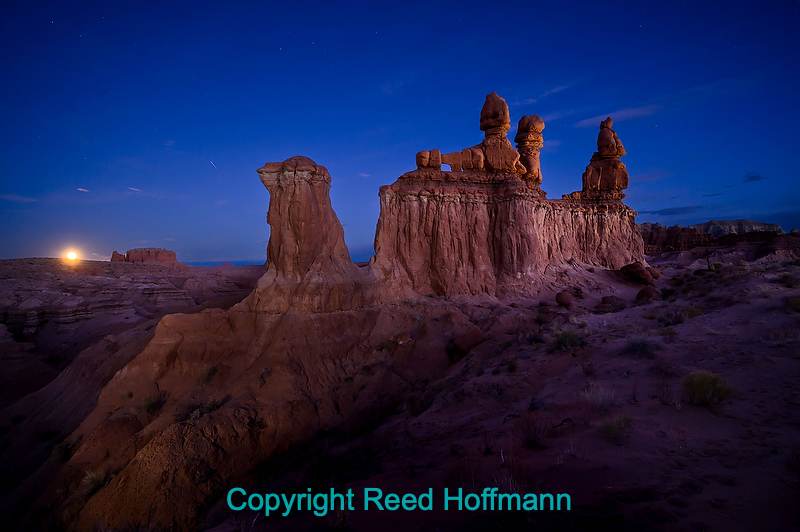
To light “Three Sisters” in Goblin Valley State Park at moonrise for my workshop group in November, I used three Lume Cubes. One was at far left and two at far right, and all three had barn doors attached to light only the parts of the scene I wanted to see in the resulting photo, leaving the other areas darker. That keeps the viewer’s attention focused where I want it. Nikon Z6 III, Manual exposure, Sunny white balance, ISO 400, 6-seconds at f/4.5, Nikkor Z 14-30mm f/4 S lens at 17mm.
So for years now, when teaching low level lighting during workshops, I always recommended Lume Cubes and that kit they sold (with two lights and accessories). But a couple of months ago a student dropped me a note saying they couldn’t find the kit on the company’s website. I looked, and they were right. The Cubes were still there, but no kit, no accessories. And sadly, after checking with my contacts at Lume Cube, my fears were confirmed – they no longer sell them. They still sell the Cubes, with their awesome Bluetooth capabilities, but not the accessories.
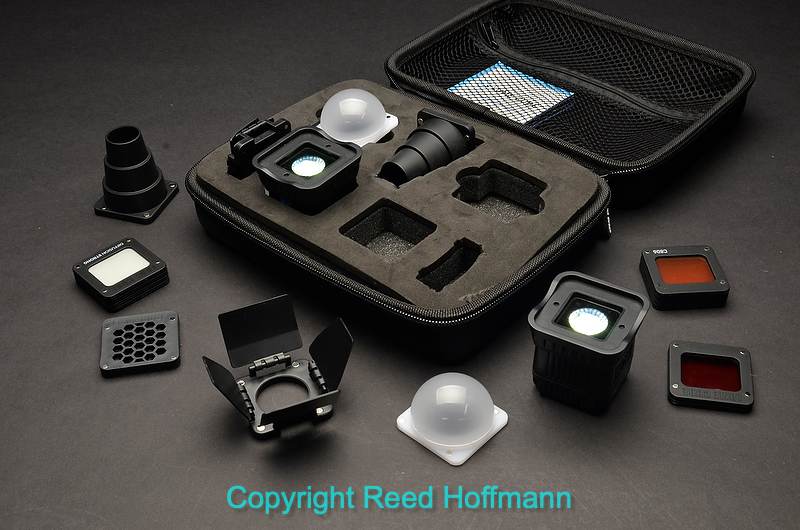
The kit that Lume Cube used to sell, with their wonderful accessories. If you know of anyone who has a kit (or accessories) and not using them, let me know!
Searching the web for alternatives, I found something similar: the Ulanzi Cute Lite. It comes in a couple of different configurations, ships with accessories and is less expensive than a Lume Cube. That’s the good news. The bad news is that there’s no Bluetooth, but I decided to go ahead and order the model that has adjustments for both color and power. It arrived this week, and after charging, I turned it on and started trying the power and color controls. On the plus side, the brightness is adjustable from 100% to 3% (lower than that and it simply turns off), and the color adjustment makes it easy to cycle through a wide range of options. However, changing the power changes the color too, which is a problem. In other words, once you’ve found a color and brightness you like, changing the power will change that color, forcing you to adjust the color again. Which means more time and trouble when trying to get the lighting right.
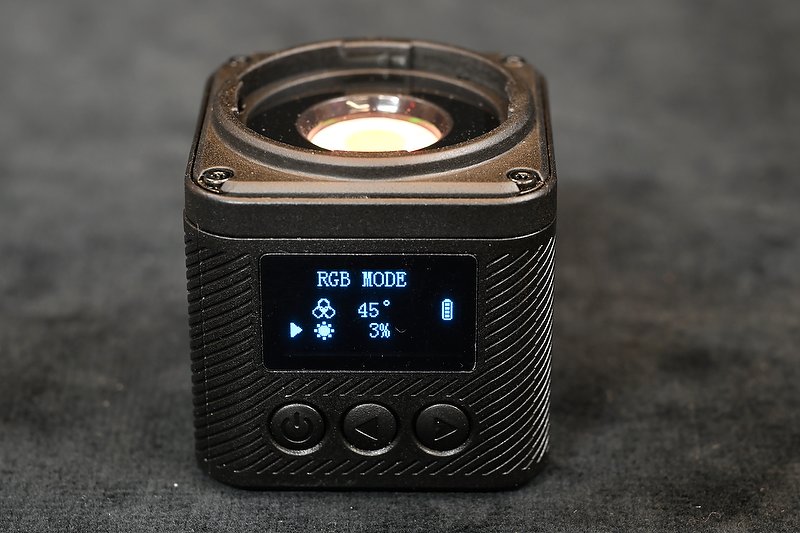
One of the Ulanzi Cute Lite models allows you to change both power level and color. Those are easy to adjust, but changing the power changes the color, which is not good. They sell another that doesn’t offer color changes, but can only be adjusted to four levels of brightness.
As for the included accessories, the barndoor isn’t as pictured on Amazon, but actually better. It’s fairly large with a built-in diffuser, and “bayonets” onto the front of the light. There’s also a Fresnel lens included that gives you a spotlight of sorts with inserts that allow you to project a maple leaf, heart and a few other shapes. I don’t see much use for those (unless you’re Canadian, of course).
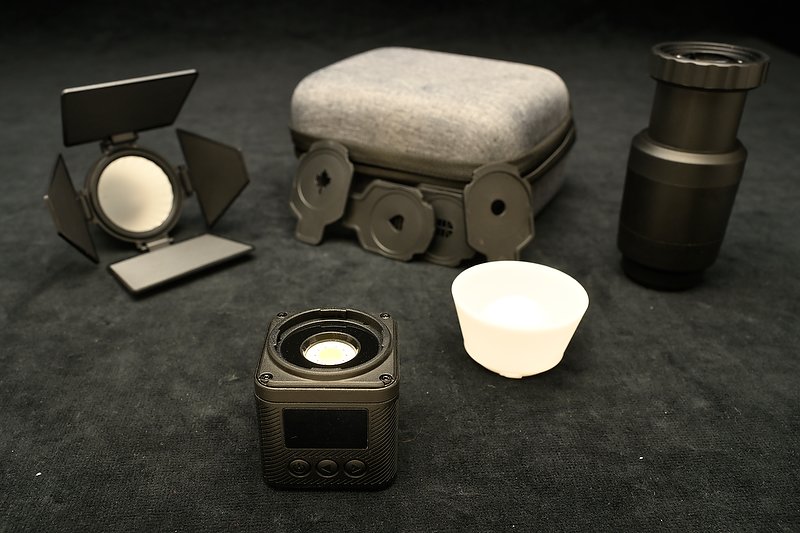
The Ulanzi Cute Lite kit that I bought on Amazon.
While I can see times where I’d incorporate the Ulanzi light into some of my night shoots (mainly to provide color in the background), it’s no replacement for my Lume Cubes and their Bluetooth capability. Which makes me glad that Lume is still selling the Cubes. As for their decision to stop selling the accessories for the Cubes, I’ll just need to take very good care of the ones I have!
(If you like this story, please share it with your friends and let them know about the links on photography that I post on my business Facebook page. I’m also on Instagram and Twitter, @reedhoffmann. And if you’re curious about the workshops I teach, you can find them here. Finally, you can subscribe to this blog from my home page.)

